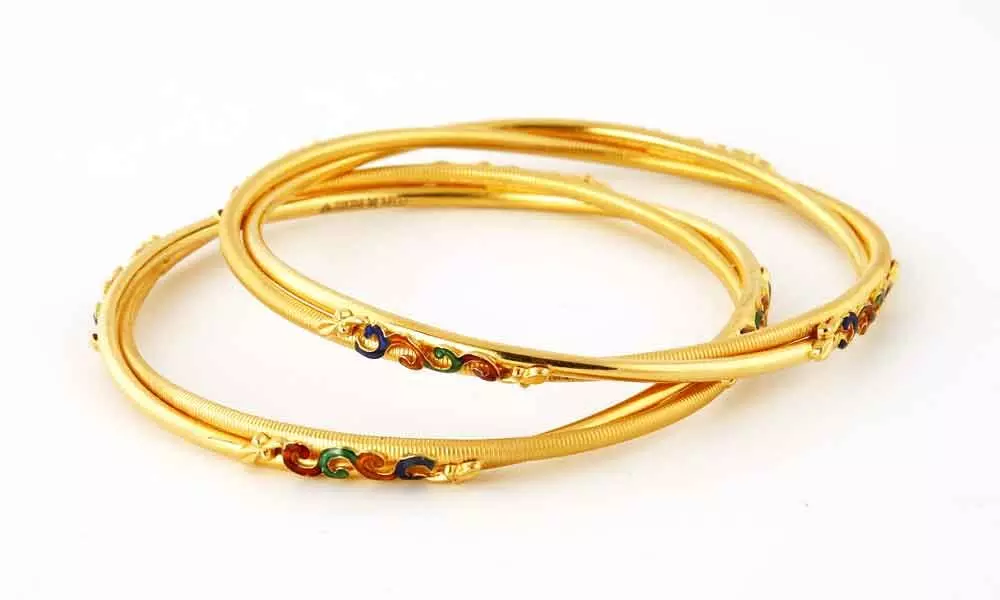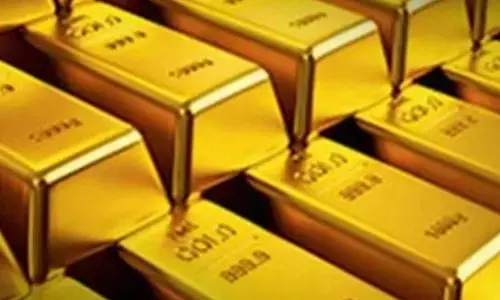Gold adds lustre to your portfolio

The recent equity market meltdown across the globe has rushed ‘hot money’ into safer heavens like Gold and the $.
The recent equity market meltdown across the globe has rushed 'hot money' into safer heavens like Gold and the $. The uncertainty caused on the world trade by the current virus outbreak is aggravating the matters only further. This has brought spotlight on Gold as the rally started coupled with the dollar appreciation against Indian Rupee.
This is not all of a sudden, though, internationally the gold prices were hardening up since last January due to the overall sluggish global growth arising out of ambiguity over the trade war of US - China and the subsequent chain reaction set off with other trading partners.
Then there are central bankers across the countries, one of the largest consumers, began to surge their allocations towards to Gold in their portfolios as the clouds hovered on the US economy's growth prospects.
The COVID-19 outbreak broke the last straw especially on travel, tourism and hospitality impacting first China then other parts of the world as the virus spread continued. This has resulted in restrictions in corporate travel and mass cancellations by leisure travel into the coming holiday season.
These are the sectors that are being hit directly while it has repercussions on to the secondary sectors like manufacturing, services, etc. and thus on to finance like banks, etc.
These conditions are prime for avoiding riskier investments like equity, which we've witnessed in the last few weeks when the stock markets experienced huge selloffs resulting in increased volatility transforming losses to the investors.
With this backdrop, gold has started to attract interest and larger mindshare of the investors trying to reduce their losses and also offset their riskier investments. This has got the debate of gold as an investment to the fore.
In financial planning, an exposure to 5 per cent to gold as an investment going up to 10 per cent is recommended. This exposure is for reducing the risk of the total portfolio and also creating an asset allocation depending upon the risk appetite.
But the rise of gold price is arbitrary to $ because we measure the price of gold in $ terms. Despite the last one year's increase in the gold prices, there's an absolutely any change in the fundamentals i.e. the demand-supply equation.
Neither has there been a drastic reduction in the production (mining) or tremendous escalation in the consumption to justify the price increase in the last one year excepting that there's a huge jump in the ETF (exchange traded funds) investments in Gold.
As the memories of the Great Financial Crisis (GFC) of 2008 haven't faded completely, investors have begun to assume the worse where the central bankers have pumped fiat money to jack up the economic activity.
Unlike the currency, gold is not owned or backed up by any central bank while the availability (production/mine) is limited, it derives value from within making it the most attractive asset during these tough times. In the last one-year contributions to gold ETFs has surged by 26 per cent adding momentum to the gold price spurt.
History beckons us that at each of these global crises, gold prices have shot up significantly. The greatest rally has been during the '70s when the world witnessed the 'oil shock', a crisis which hit the world due to the decreased supply when the oil prices increased by over 400 per cent.
This is also the period when the fundamentals of gold changed and the price per ounce of gold rose to $800 in 1980 from just about $31 in '71. That was a whopping 2200 per cent gain in about 9 years' time.
A similar rise happened during the GFC period when the gold price per ounce was at around $450 in mid-'05 to about $1900 by mid-'11, more than 4 times the price in just about 6 years.
But, has the current virus outbreak influence a major economic contraction which is just limping back to normalcy is a question to ponder.
Even if chances for such extreme conditions are unfounded, investors are better off having an exposure to gold within their portfolios could spell good for not just making opportunistic returns but also to trade off risk.
(The author is a co-founder of "Wealocity", a wealth management firm and could be reached at [email protected])















